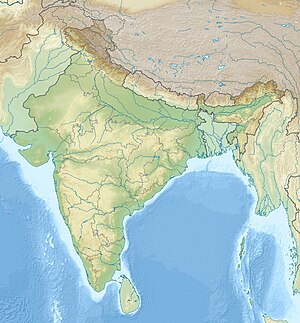Yasodaman II
Appearance
| Yasodaman II | |
|---|---|
| Western Satrap king | |
 Coin of Yasodaman II. | |
| Reign | 317-332 CE |
| Predecessor | Rudrasimha II |
| Successor | Rudradaman II |
| Father | Rudrasimha II |
Yasodhaman II (317–332) was a son and probably sub-king of king Rudrasimha II of the Western Satraps. He declared on his coins to be the son of Rudrasimha II.[2]
Yasodaman was succeeded by another of Rudrasimha II's sons Rudradaman II (332–348).
During his rule, a Saka ruler inscribed the Kanakerha inscription,[3] on the hill of Sanchi mentioning the construction of a well by the Saka chief and "righteous conqueror" (dharmaviyagi mahadandanayaka) Sridharavarman (339-368 CE).[1] Another inscription of the same Sridhavarman with his military commander is known from Eran.[1] These inscription point to the extent of Saka rule as the time of Rudrasimha II and Yasodhaman II.
References
[edit]- ^ a b c Buddhist Landscapes in Central India: Sanchi Hill and Archaeologies of Religious and Social Change, c. Third Century BC to Fifth Century AD, Julia Shaw, Routledge, 2016 p58-59
- ^ Catalogue of the coins of the Andhra dynasty, the Western Ksatrapas, the Traikutaka dynasty, and the "Bodhi" dynasty, by British Museum. Dept. of Coins and Medals; Rapson, E. J. (Edward James) p.170
- ^ Marshall, The Monuments of Sanchi p.392



